Designing a vintage bathroom with retro decor is a perfect way to bring a sense of nostalgia and classic elegance to your home. From the glamorous, geometric lines of the 1920s Art Deco period to the bright pastels and bold patterns of the 1950s, and the earthy, natural tones of the 1970s, vintage bathrooms have a timeless appeal.
The charm of retro design lies in its attention to detail, and you can reflect that in your bathroom by thoughtfully selecting tiles, fixtures, and accessories from a specific era.
In this guide, we’ll break down each element that contributes to creating an authentic vintage bathroom, helping you balance aesthetics with modern functionality.
Vintage Bathroom Idea With Retro Decor
Important Point
1. Selecting the Right Era:
Choosing the decade or design style you want to recreate is the foundation of your vintage bathroom. Each era brings a unique atmosphere and feel:
- 1920s Art Deco: This style is marked by bold geometry, symmetry, and an air of luxury. Art Deco bathrooms often feature striking contrasts, such as black-and-white color schemes with metallic accents like brass or chrome. Intricate tile patterns, zigzag or chevron motifs, and sunburst designs are common.
- Mid-Century Modern (1940s-1960s): This period focuses on clean, functional designs with simple lines. Bathrooms from the 1950s and 1960s often highlight soft pastel colors (think mint green, baby pink, or pale blue) and materials like laminate countertops and glass or ceramic tiles. Sleek, minimalistic fixtures characterize this look.
- Victorian (late 1800s-early 1900s): Victorian bathrooms are elegant and ornate, featuring deep, rich colors and intricate details. Clawfoot tubs, high-tank toilets with pull chains, and decorative brass or porcelain fixtures define this era. Floral or damask wallpaper and wood paneling also add to the sense of luxury.
- 1970s Retro: The 1970s brought warm, earthy tones into bathroom design, often incorporating harvest gold, avocado green, and burnt orange. The style was laid-back and homey, with an emphasis on natural materials like wood, wicker, and stone, and a more casual approach to design.
2. Creating a Vintage Color Palette:
Color plays a key role in setting the mood of your vintage bathroom, and it can help transport the space back to your chosen era.
- 1920s Art Deco: The typical palette is bold and monochromatic, with a focus on black and white. To add a touch of glamor, metallic accents like gold, silver, or chrome can be introduced in the form of fixtures, mirrors, and lighting. For a more luxurious Art Deco look, jewel tones such as emerald green, sapphire blue, or deep burgundy can be used sparingly as accent colors.
- 1950s Pastels: This era was all about playful, light colors that brought a cheerful vibe to homes. Soft pink, mint green, pale yellow, and sky blue were often used on tiles, walls, or even bathtubs and sinks. These pastels are perfect for a breezy, lighthearted bathroom aesthetic that feels fresh and vintage at the same time.
- 1970s Earth Tones: In contrast to the bright pastels of the 1950s, the 1970s embraced warm, earthy tones. Shades like mustard yellow, chocolate brown, deep orange, and avocado green were common and can be integrated through tiles, wall paint, or accessories. These colors evoke a cozy, natural atmosphere.
3. Tile Styles to Match the Era:
The type and pattern of tiles you use will dramatically affect the overall look of your bathroom:
- Subway Tiles (1920s-1950s): Classic subway tiles, often white with dark grout, became a defining feature of early 20th-century bathrooms. These rectangular tiles are simple yet stylish, and their clean look works well in both Art Deco and mid-century modern designs. If you want a more decorative touch, consider adding a border tile or a contrasting tile trim.
- Hexagonal Tiles (1900s-1920s): Small, hexagonal floor tiles were a staple of Victorian and early 20th-century bathrooms. White hex tiles, often accented with small black inserts to create a subtle pattern, provide an authentic vintage feel. You can use these tiles on the floor or as part of a shower wall to capture the classic look.
- Checkerboard Floors (1950s): Black-and-white checkerboard tiles were hugely popular in the 1950s and are perfect for adding a retro flair to your bathroom floor. This bold pattern can also be achieved with contrasting pastels for a playful twist. Pair it with pastel walls or white subway tiles to complete the look.
4. Retro Fixtures and Fittings:
Fixtures are the centerpiece of any vintage bathroom and choosing the right ones can define the overall style.
- Clawfoot Tubs: These elegant freestanding bathtubs with ornate, claw-shaped feet are a hallmark of Victorian design. Available in cast iron or modern acrylic versions, clawfoot tubs make a strong statement in any vintage bathroom, especially when paired with exposed piping and a vintage-style showerhead.
- Pedestal Sinks: To maintain an open, airy feeling in your bathroom, a pedestal sink is a great choice. These sinks, often found in early 20th-century homes, can be paired with vintage-style faucets featuring cross handles. Opt for chrome or polished brass fixtures to maintain the retro look.
- Exposed Plumbing: Exposed copper or brass plumbing, especially for the bathtub and sink, was common in older bathrooms. Keeping the pipes visible or adding reproduction fixtures with this look brings authenticity to the space. Wall-mounted faucets and overhead rain showerheads can also be part of this design.
5. Mirrors and Lighting:
Vintage lighting and mirrors play a critical role in defining the style and ambiance of the bathroom:
- Art Deco Mirrors: Art Deco mirrors often feature bold, geometric shapes, such as sunbursts or sleek, octagonal frames. For an extra touch of elegance, mirrors with etched glass designs or those framed with brass or chrome can enhance the luxurious feel of the bathroom.
- Mid-Century Round Mirrors: Simple round or oval mirrors, often frameless or with a thin metallic border, reflect the streamlined aesthetic of the 1950s and 1960s. These mirrors can be paired with understated, minimalist fixtures to achieve a clean, modern look.
- Sconce Lighting: Vintage wall sconces add warmth and character to a bathroom. For Art Deco styles, look for globe or milk glass shades mounted on chrome or brass bases. For a mid-century bathroom, choose sleek, cone-shaped sconces or atomic-style lighting fixtures. In a Victorian bathroom, choose more ornate wall lights with crystal or frosted glass details.
6. Furniture and Accessories:
Furniture and accessories are where you can add layers of charm and personality to your vintage bathroom:
- Vintage Vanities: If you have the space, a repurposed antique dresser or table can serve as a unique and stylish vanity. With a vintage sink basin mounted on top, this can create a one-of-a-kind focal point. Alternatively, you can purchase reproduction vanities in vintage styles that offer more storage and functionality while still maintaining a retro look.
- Retro Accessories: Small details, like soap dishes, toothbrush holders, and towel racks, can make a big difference. Look for chrome, brass, or ceramic accessories with period-appropriate designs. Floral or geometric patterns were common in 1950s and Victorian accessories, while simpler, more functional items were typical of mid-century modern bathrooms.
- Textiles: Don’t forget to add vintage flair with your towels, bath mats, and shower curtains. Striped or checkered towels are perfect for a 1950s look, while lace-edged curtains or floral prints work well in a Victorian-style bathroom. Opt for shag rugs or bold, patterned bath mats to channel the 1970s vibe.
7. Additional Decor Elements:
Adding decorative elements is where you can truly personalize your vintage bathroom:
- Vintage Wall Art: Framed retro advertisements, vintage posters, or botanical illustrations are ideal for adding a decorative touch to your bathroom. If you prefer something more subtle, consider art deco prints or black-and-white photography in vintage frames to create an elegant, timeless look.
- Planters and Plants: Incorporating plants into your bathroom decor can soften the hard lines of tile and metal fixtures. Vintage-style planters made from ceramic, wicker, or brass are perfect for housing small potted plants like ferns, ivy, or succulents. Plants also add freshness and warmth, especially in more industrial or stark vintage styles.
8. Budget-Friendly Ideas:
Achieving a vintage bathroom doesn’t have to be expensive. There are many ways to create a vintage look without breaking the bank:
- Reproduction Fixtures: Many companies now offer reproduction vintage-style fixtures that mimic the look of antique pieces but come at a fraction of the cost. These items often offer modern features and durability while still maintaining the retro aesthetic.
- Thrifting and Upcycling: Flea markets, antique shops, and thrift stores can be treasure troves for finding vintage accessories, mirrors, or even furniture that can be repurposed for your bathroom. Upcycling an old piece of furniture into a vanity or storage unit adds a personal, unique touch while saving money.
Conclusion:
Designing a vintage bathroom allows you to blend history and charm with modern comfort, creating a space that feels both nostalgic and functional.
By carefully selecting elements like the color palette, tile design, fixtures, and accessories, you can evoke the distinctive style of your chosen era, whether it’s the elegance of the 1920s Art Deco period, the playful pastels of the 1950s, or the earthy warmth of the 1970s.
With the right balance of vintage-inspired details and practical modern touches, your bathroom can become a timeless retreat, combining beauty, personality, and functionality in one captivating space.
Like this post? Share it with your friends!
Suggested Read –

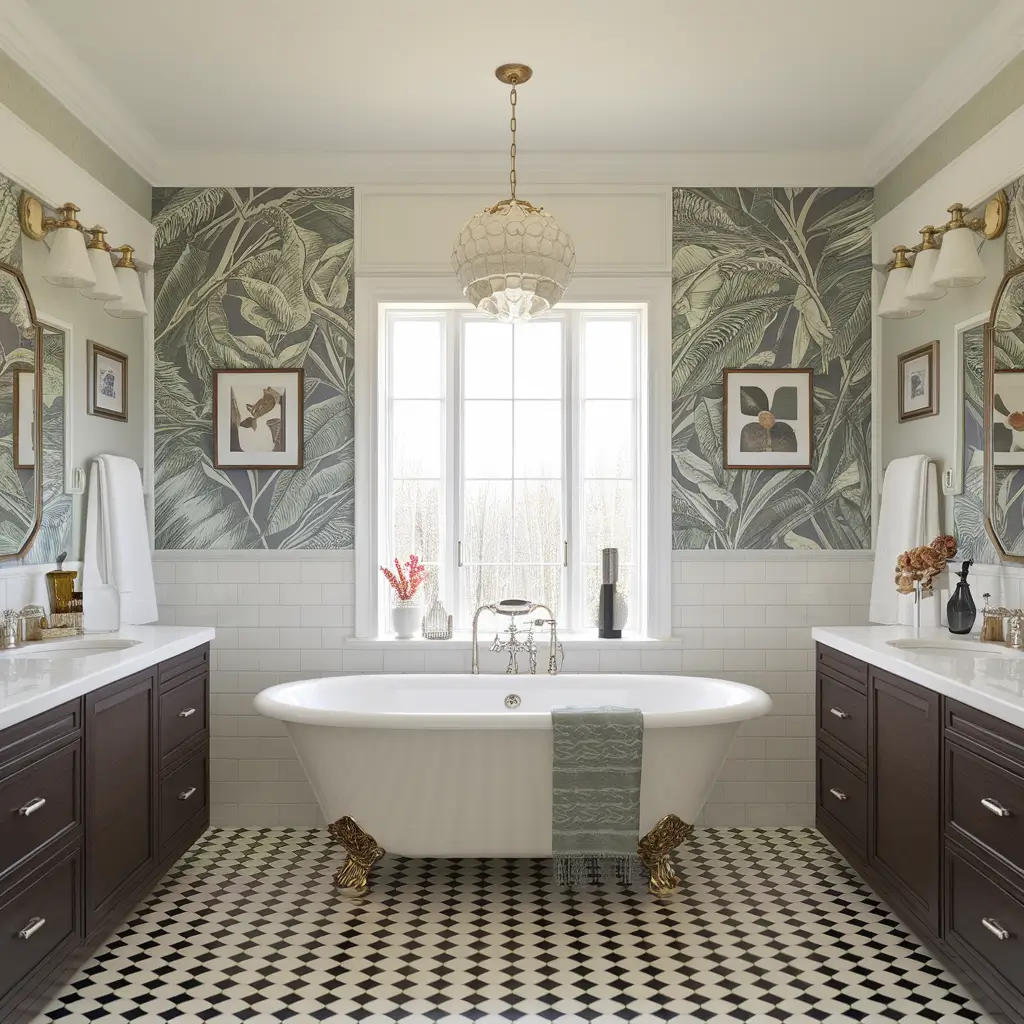
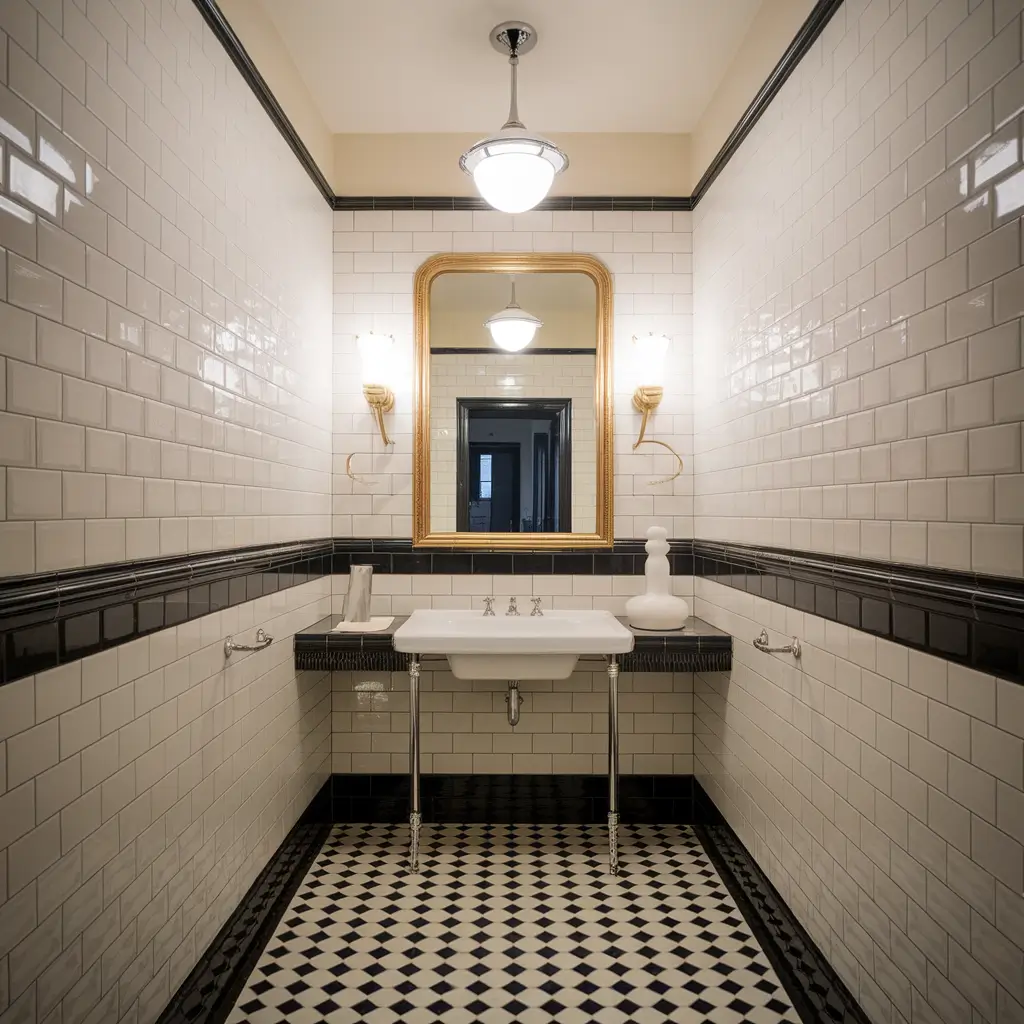
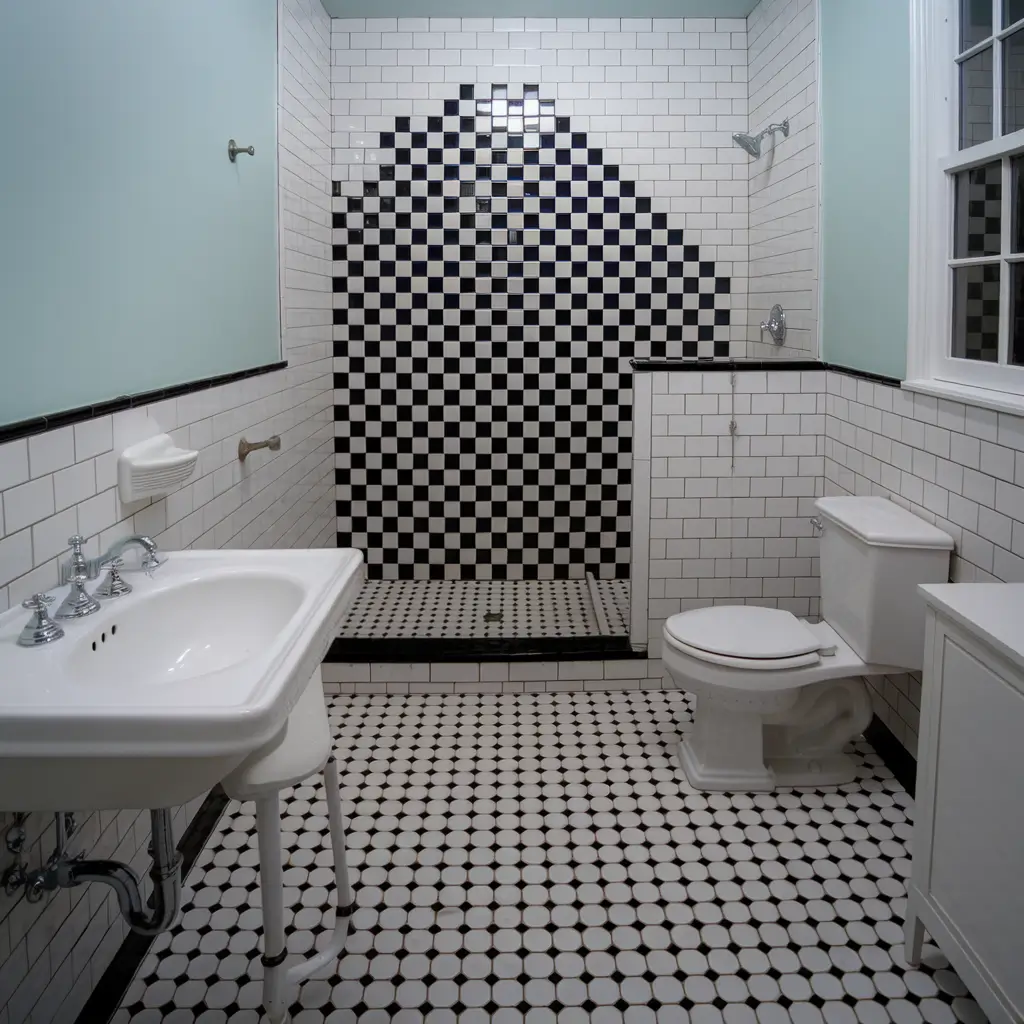
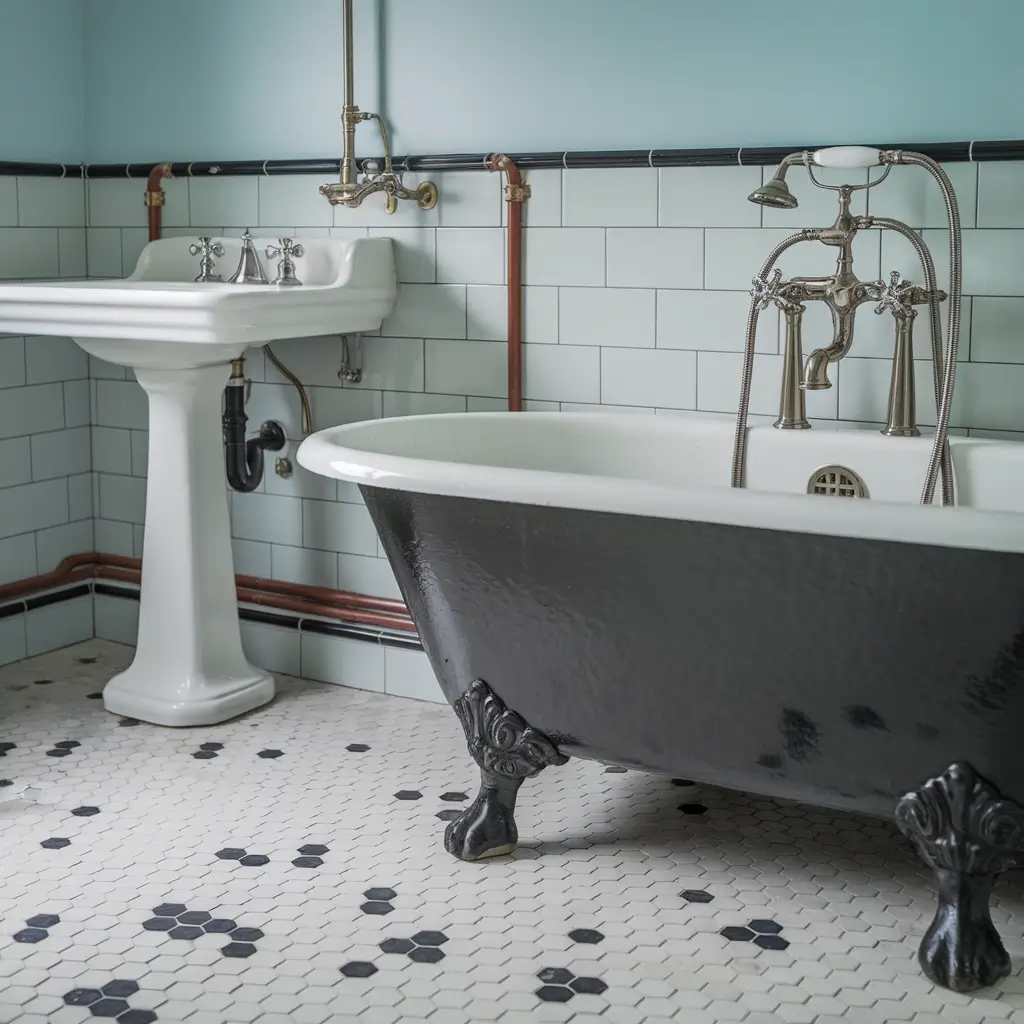
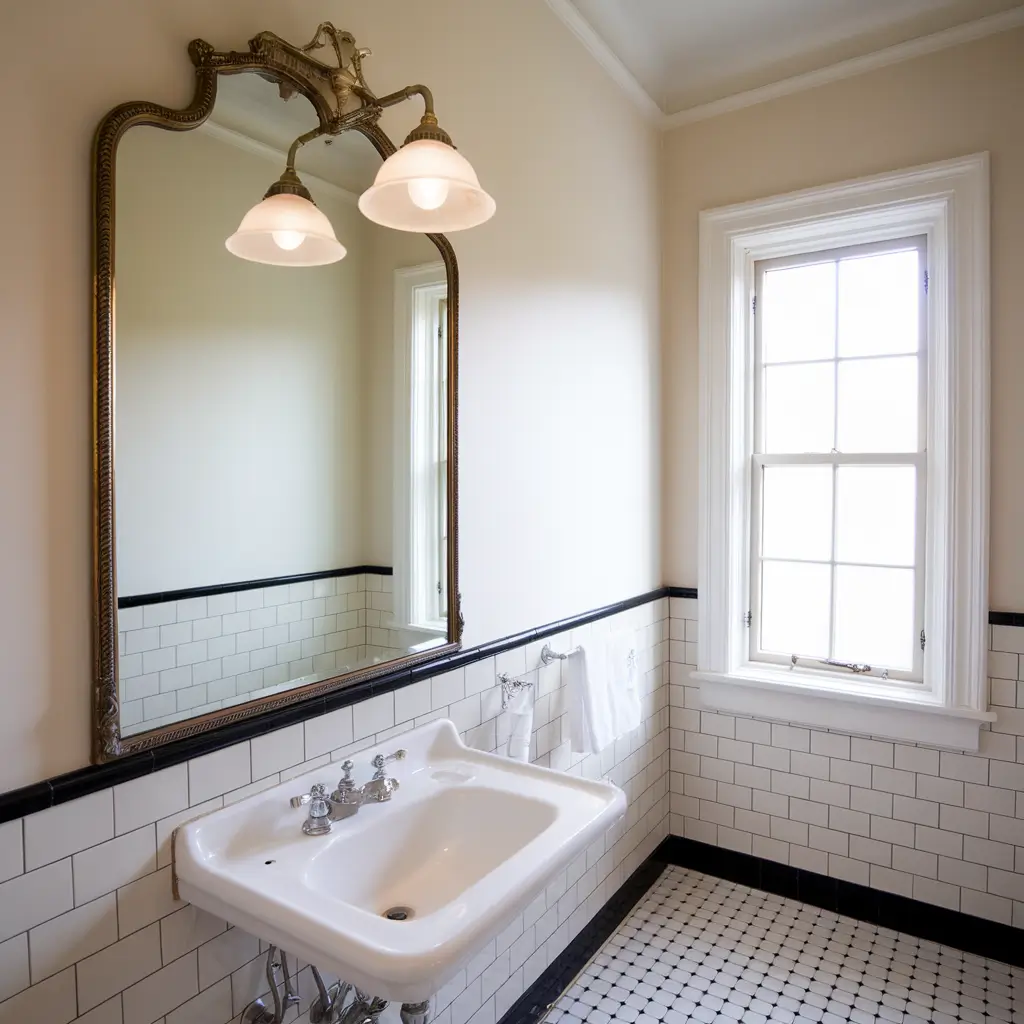
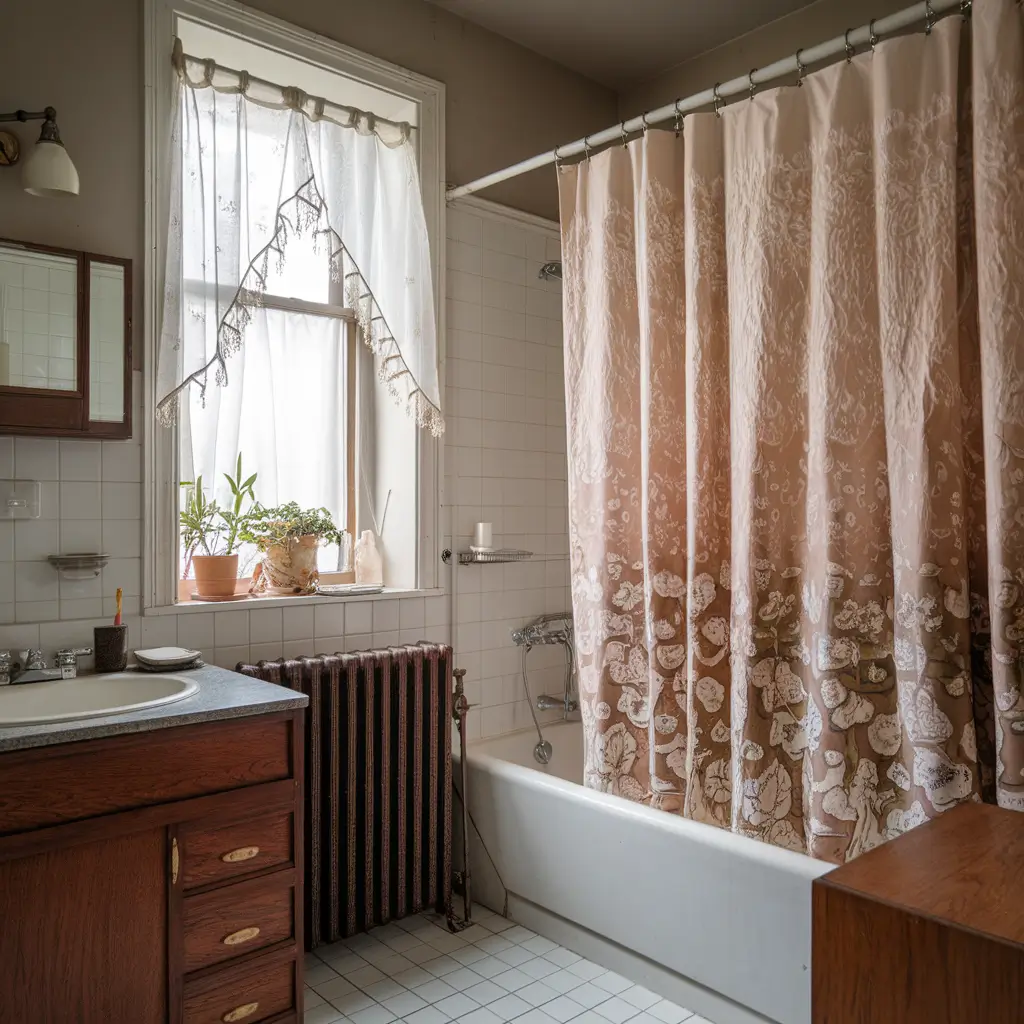

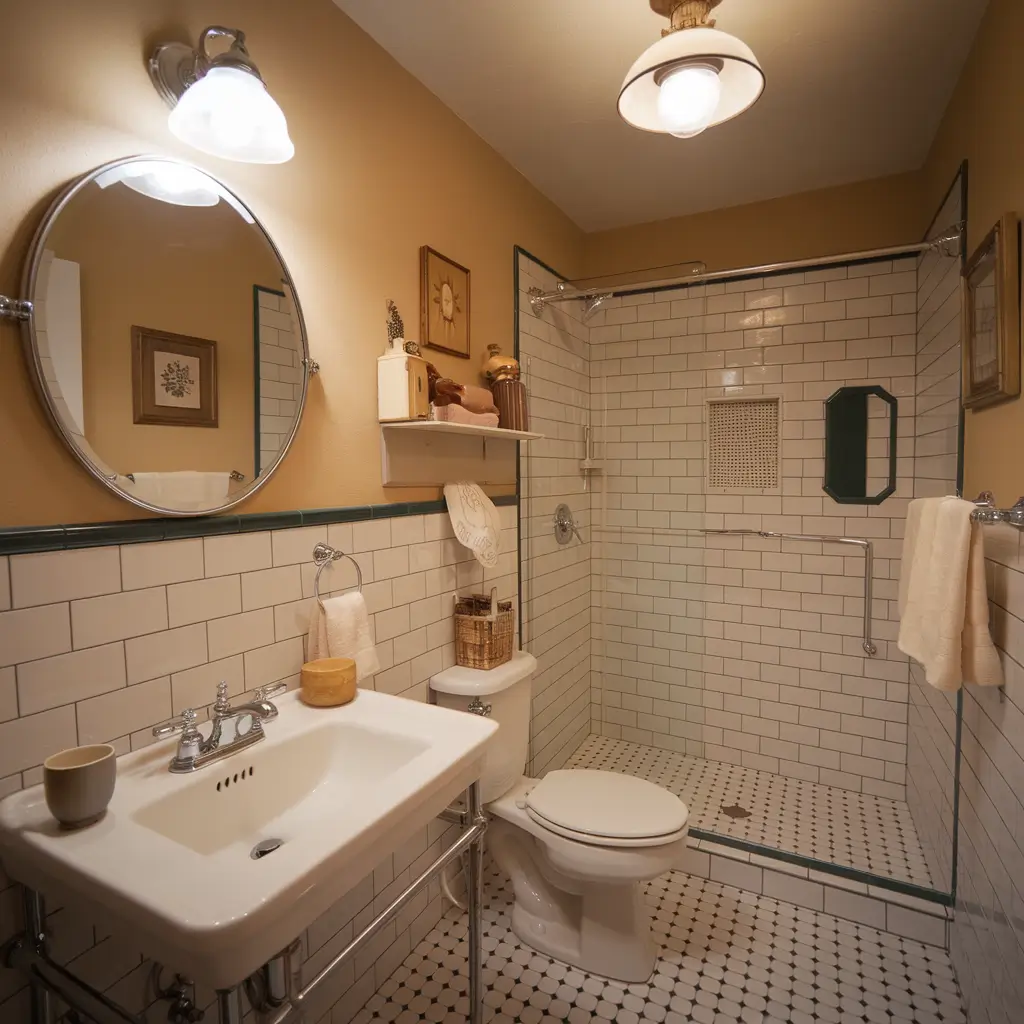

Leave a Reply